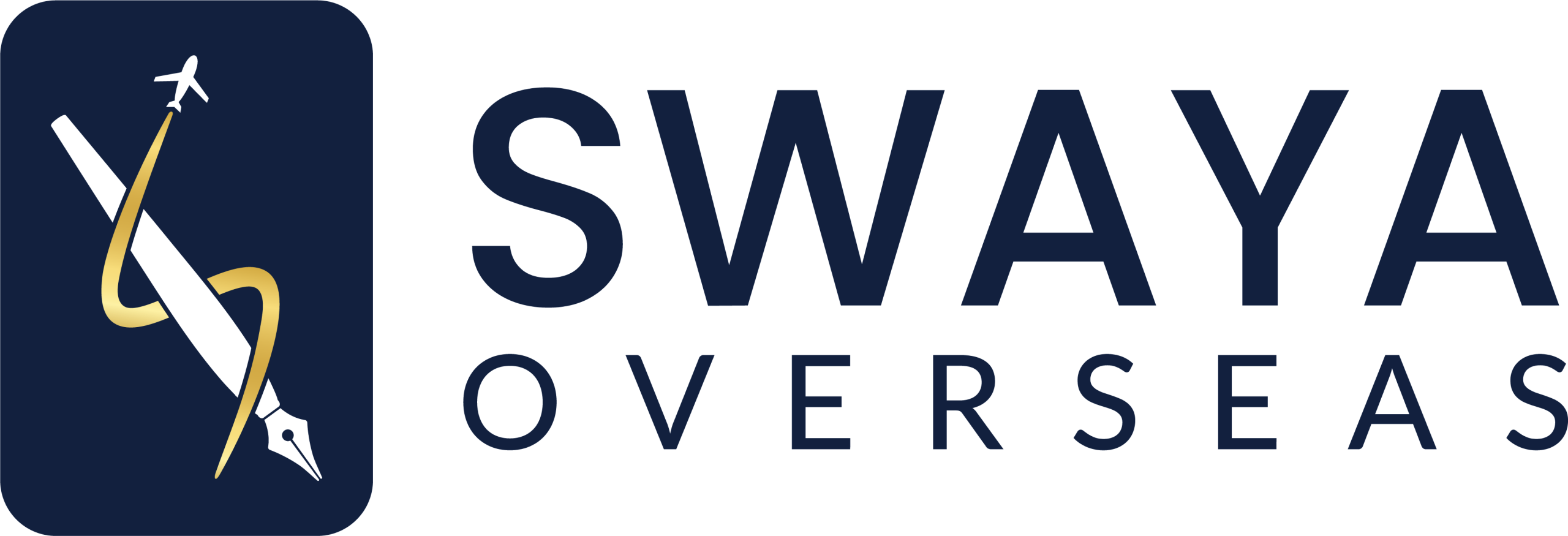Admission Process
Ideally, students should start the admissions process about 15-18 months before the intended date of joining a foreign university. The various stages of the admissions process are as follows:
- Issuing a passport: A valid passport is mandatory to appear for all overseas entrance exams. It should also be valid for at least 6 months at the time of traveling overseas.
- Identifying the course of your interest: You must decide what exactly you want to study abroad. It is advisable to identify your strengths and aptitude in advance. You can get detailed information about the subjects and courses on the websites of all universities.
- Preparation for overseas entrance exams: It is advisable to start preparations for GRE/GMAT/SAT at least 6 months in advance of taking these tests. You must be ready with your GRE/GMAT/SAT and TOEFL or IELTS scores preferably 9–12 months before the intended date of joining a foreign university.
- Engineering students often appear for the GRE exam in their 2nd or 3rd year.
- Students planning to pursue a bachelor’s degree in the USA should ideally appear for the SAT exam during their Std. XI studies.
- Countries like the UK, Australia, and New Zealand may allow students to submit their IELTS score even after applying or after getting conditional admission.
- Collecting university data and selecting the right universities: Based on your academic profile, test scores, and financial ability, compile a list of 25–30 universities. Research the relevant university data from the university websites and filter it down to 5–10 universities for applying. The final selection of universities will depend on the following criteria:
- Academic performance: Universities expect an above-average and consistent academic background from the students. The choice of university should align with your past academic achievements.
- GRE/GMAT/SAT and TOEFL/IELTS scores: High test scores may lead to admission in top-ranked universities along with financial assistance. For TOEFL/IELTS, students must meet the minimum score requirements for eligibility.
- Availability of the program of interest: Verify whether your desired major is available for the program (Diploma/Bachelor’s/Master’s/PhD) and if the intake/start date is offered at that university.
- Accreditation: Check the current accreditation status of the institution on their website and through any official government department’s website.
- Ranking of the university: While rankings are unofficial, refer to private rankings by newspapers or magazines based on their own parameters. Note that the ranking of the program is more important than the overall university ranking (e.g., Harvard’s Business Program vs. its Engineering Program).
- Reputation of your institution from India: Students from reputed Indian universities often have better chances of getting admission in top foreign universities compared to those from lesser-known Indian institutions.
- Cost of education: Select universities that align with your budget. Public/state-funded universities typically have lower tuition fees than private ones, though living costs can be higher in cities like New York, London, Toronto, Sydney, etc.
- Funding possibility at the university: Find out about available funding options by contacting department professors. This could also lead to teaching/research assistantships in the USA.
- College location: Choose a university based on your preference for city life or rural settings.
- Research interests of department/faculty: For postgraduate applications, check if the department’s research projects align with your interests. This can increase your chances of getting a research assistantship.
- Other criteria: Consider the size of the institution, student-faculty ratio, campus life, student activities, library facilities, and other factors like climate and deadlines.
- Applying to the university with complete documentation: While preparing the application packet, check for university/department-specific requirements. Ensure you have all the necessary documents ready for submission.
- Application/admission status: After applying, expect a response in 6–8 weeks. Most foreign universities communicate if any documents are missing or if your application is rejected. You can track your application status online if you applied online.
- Receiving the I-20 / offer letter / acceptance letter: Once accepted, universities will send you an offer letter. After reviewing the decisions, confirm your acceptance by following the university’s instructions. You may need to pay a non-refundable deposit, which may be adjusted against the first semester fees. Once confirmed, the final visa application document (e.g., I-20 for the USA, CAS for the UK, COE for Australia and NZ, LOA for Canada) will be sent.
- Applying for student visa / study permit: After receiving the final visa letter, apply for the respective country’s student visa or study permit. Details of the visa process for each country can be found in the respective country’s section.
- Final pre-departure arrangements: Once the visa is issued, make necessary arrangements for traveling overseas, including accommodation, air tickets, airport pickup, foreign exchange, insurance, and orientation registration.
- Application form: Most universities prefer that students fill the application forms online. This prevents any typo errors and speeds up the processing time. If filled online, mention the reference/confirmation number when sending other documents by mail/courier. If online application is not available, paper application should be neatly filled with a black pen or typed in CAPITAL LETTERS.
- Application fee: Ranges from NIL to US$250 depending on the country, university, and course. It can usually be paid through an International Credit Card (for online applications) or by International Demand Draft.
- Resume: Typically required for MBA applicants who have work experience.
- Statement of purpose / essays: An essential part of the application, especially for MBA and financial aid considerations. The SOP should include:
- Your academic goals and research plans
- Reasons for choosing the specific program and university
- Advantages of studying the chosen course
- Insights into your personality and communication abilities
- Transcripts, marksheets & degree / diploma certificates:
- In the US and Canada, transcripts (official academic records) are mandatory.
- They must be certified and sealed by your college/university.
- Other countries may accept just marksheets and certificates.
- Recommendation letters: Usually 2–3 letters are required.
- May need to be submitted online or sealed/stamped (US/Canada).
- Should be from professors, project guides, or employers.
- Must include referee’s designation, relationship to applicant, and justification of applicant’s proposed studies.
- Test scores:
- For US/Canada: Official GRE/GMAT/SAT and TOEFL/IELTS scores must be sent directly by the testing organization.
- Other countries may accept attested photocopies, possibly after conditional admission.
- Financial aid application (if applicable): If applying for scholarships or aid, complete the university’s required financial aid forms.
- Affidavit of financial support: Required by US universities, this is a signed letter from the sponsor. Some universities provide a specific format. It may be needed during application or after admission, before issuance of the I-20.
- Banker’s certificate: Issued by a Nationalized or Foreign Bank on official letterhead, confirming that the sponsor has the required funds. Mostly needed by US universities at the time of admission or before the I-20 is issued.
- Certificates of extra curricular activities: Include certificates of participation or awards won in major cultural or sports events.
- Project/synopsis: Attach a 150–200 word abstract of any academic project undertaken or papers published.
- Any other requested information: This could include a Portfolio CD/DVD, passport copy, additional forms, etc., depending on the course and university requirements.
The general assumption is that it is very costly to study abroad. But there are ways to subsidize this cost if you have a good academic or extracurricular profile. This is by way of being awarded various forms of financial aids from foreign universities. The availability of financial aid varies widely depending on country, university, field of study, funds allocated for that semester, distribution policy, etc. For example, there is more aid available in US universities and in research-based fields like Engineering and Natural/Applied Sciences and for the Fall semester. There is also more aid available at postgraduate level (Masters/PhD) than at undergraduate level in most countries.
The different types of financial aids are:
- Scholarships/grants/fellowships: Students may be given a direct tuition fee waiver in the form of partial or full scholarships, grants, or fellowships. These are the most prestigious awards, and students are not required to offer any services in return. Such scholarships are highly competitive and usually awarded to students with an outstanding academic track record. The availability and amount of these awards vary from university to university depending on their available funds.
- Bursaries: This form of aid is mostly available in the UK and can be of two types:
- Need-based bursaries: Offered to students from specific countries (developing/underdeveloped) or low-income families.
- Merit-based bursaries: Similar to academic scholarships and provided based on a student’s academic achievements.
Bursaries are generally partial in nature.
- Teaching assistantships: These involve delivering lectures to undergraduate students, correcting classwork, grading papers, supervising lab sessions, etc. In return, students are either paid a stipend or receive a tuition fee waiver. Interested students should contact the department officials responsible for appointing teaching assistants.
- Research assistantships: These involve assisting faculty members with research activities, which may include working on or publishing research projects. Awarded by the department, research assistantships are usually compensated with a stipend or tuition fee waiver. They offer practical experience, academic training, and financial support.
For both teaching and research assistantships, appointments are typically offered to students in postgraduate programs and usually after arriving on campus. Students seeking these roles should demonstrate a strong command of English and excellent subject knowledge. These positions are highly competitive and may involve interviews before being awarded.
Bank loans for studying abroad
Bank loans are easily available for higher studies anywhere in the world. The terms and conditions for educational loans may vary from bank to bank.
- Eligibility: All professional/technical job-oriented courses offered by reputed universities.
- Loan amount: Maximum ₹1 crore.
- Security:
- No collateral security is required for loans up to ₹4 lakhs.
- Some banks do not require collateral for loans up to ₹7.5 lakhs.
- Repayment: Course period + one year or 6 months after getting a job, whichever is earlier. The loan is to be repaid in 5–7 years after the commencement of repayment.
- Rate of interest:
- Up to ₹4 lakhs: Prime Lending Rate (PLR)
- Above ₹4 lakhs: PLR + 1%
Feel free to contact with us

